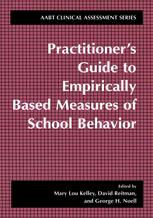

Most ebook files are in PDF format, so you can easily read them using various software such as Foxit Reader or directly on the Google Chrome browser.
Some ebook files are released by publishers in other formats such as .awz, .mobi, .epub, .fb2, etc. You may need to install specific software to read these formats on mobile/PC, such as Calibre.
Please read the tutorial at this link: https://ebookbell.com/faq
We offer FREE conversion to the popular formats you request; however, this may take some time. Therefore, right after payment, please email us, and we will try to provide the service as quickly as possible.
For some exceptional file formats or broken links (if any), please refrain from opening any disputes. Instead, email us first, and we will try to assist within a maximum of 6 hours.
EbookBell Team

4.0
36 reviewsChildren’s display of unacceptable behavior in the school setting, school violence, academic underachievement, and school failure represent a cluster of problems that touches all aspects of society. Children with learning and behavior problems are much more likely to be un- ployed, exhibit significant emotional and behavior disorders in adulthood, as well as become incarcerated. For example, by adolescence, children with Attention Deficit Hyperactivity D- order are more likely to be retained a grade, drop out of school, have contact with the law, or fair worse along a number of dimensions than their unaffected siblings (Barkely, 1998). Identification, assessment, and treatment of children with externalizing behavior problems and learningdisabilities is critical to optimizing development and prevention of relatively - tractable behavioral and emotional problems in adulthood. For example, poor interpersonal problem solving and social skills excesses and deficits are strongly associated with poor o- come in adolescence and adulthood. The school is where children learn essential academic, social, and impulse control skills that allow them to function effectively in later years. School is where problems in these areas can be most easily identified and addressed. The purpose of this book is to provide an overview of assessment practices for evaluating children’s externalizing behavior problems exhibited in the school environment. Reviews of approximately 100 assessment devices for measuring children’s externalizing problems are included. Instruments include structured interviews, rating scales, and observational methods.